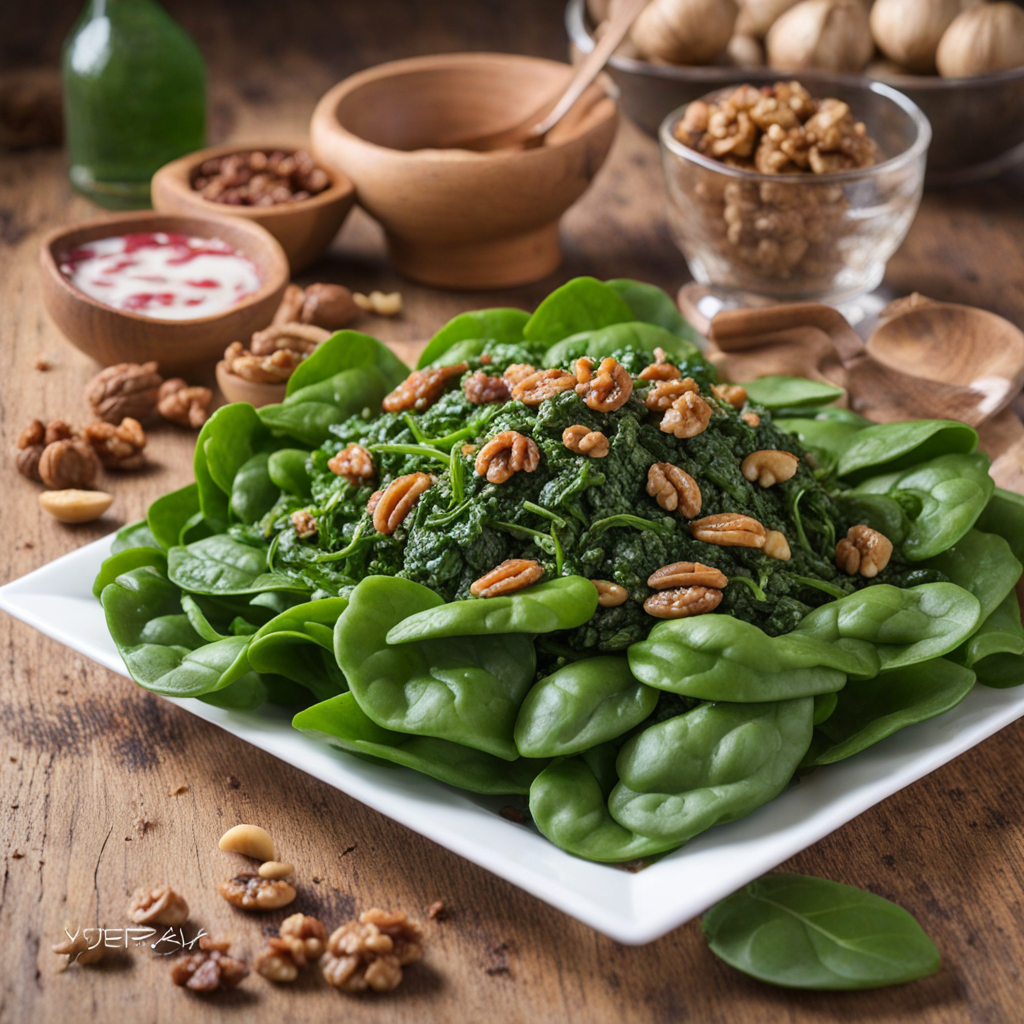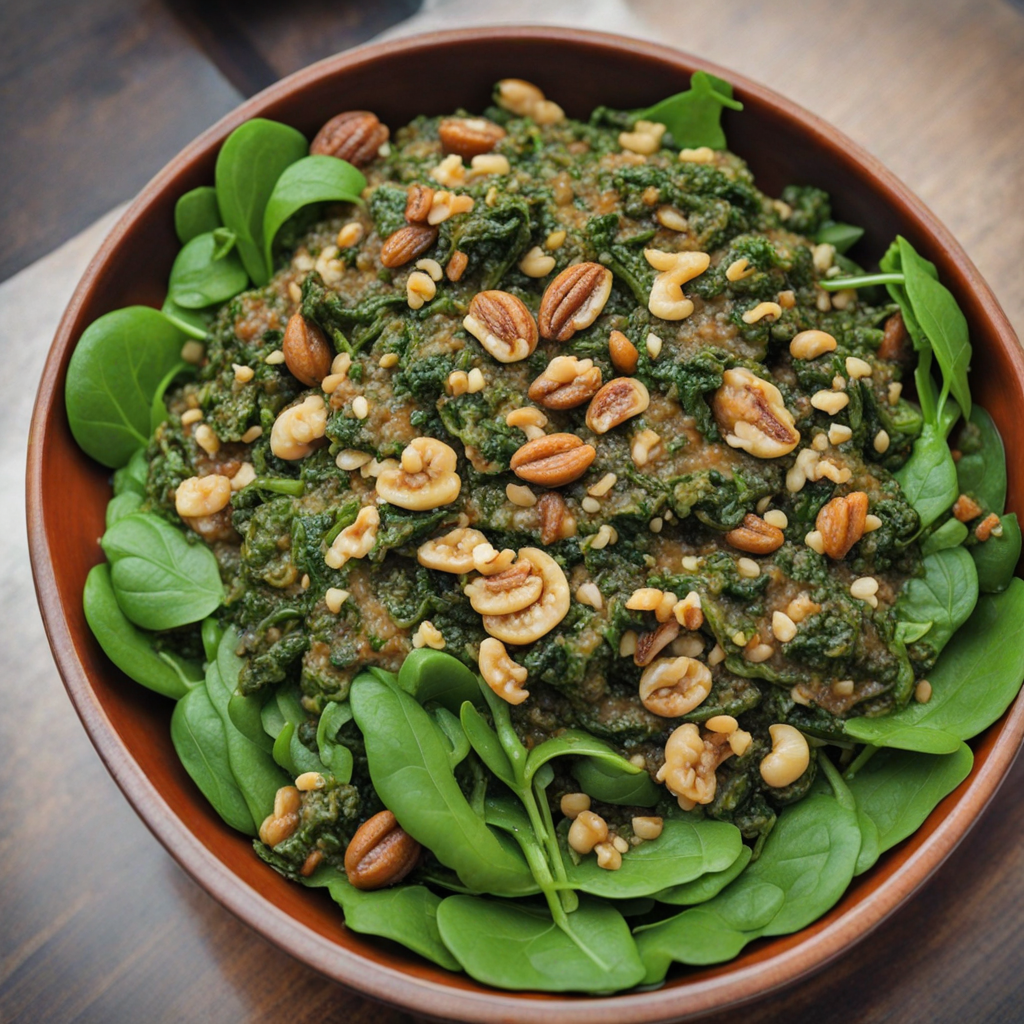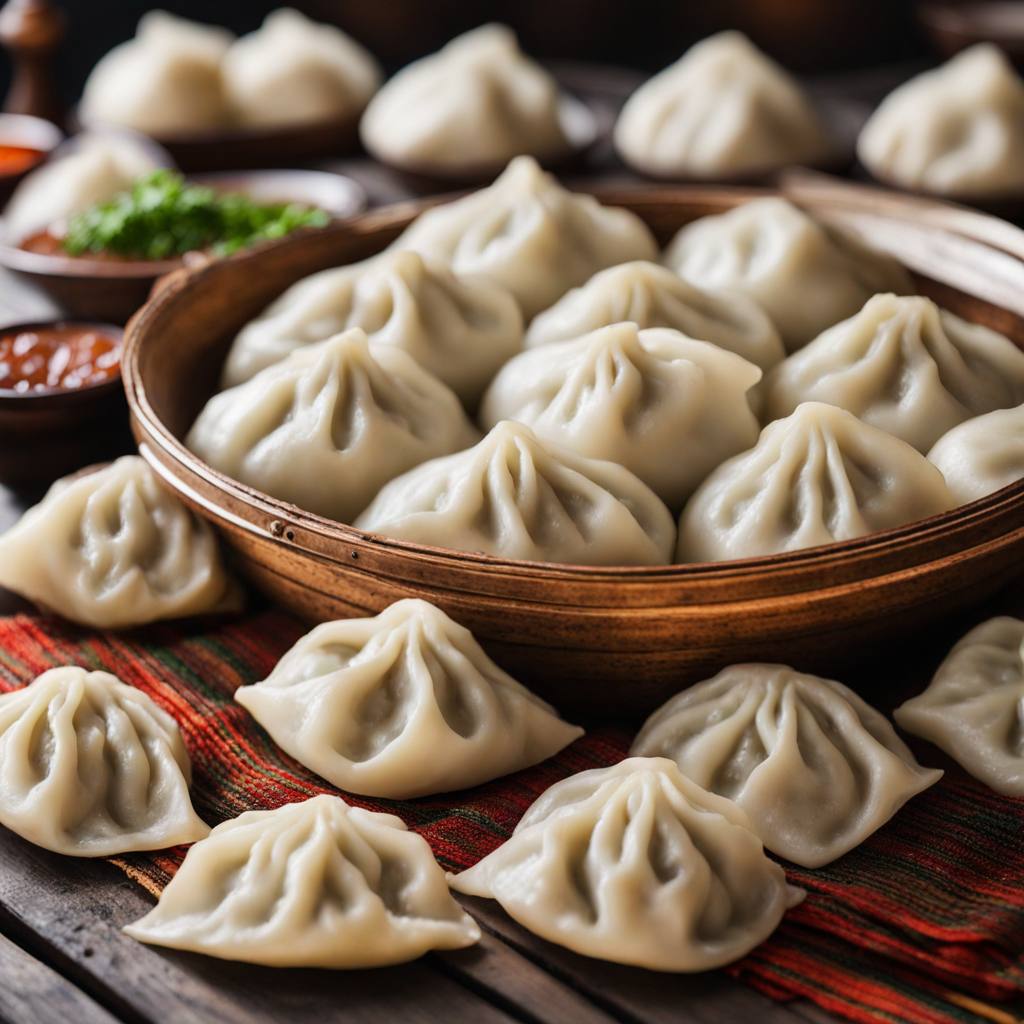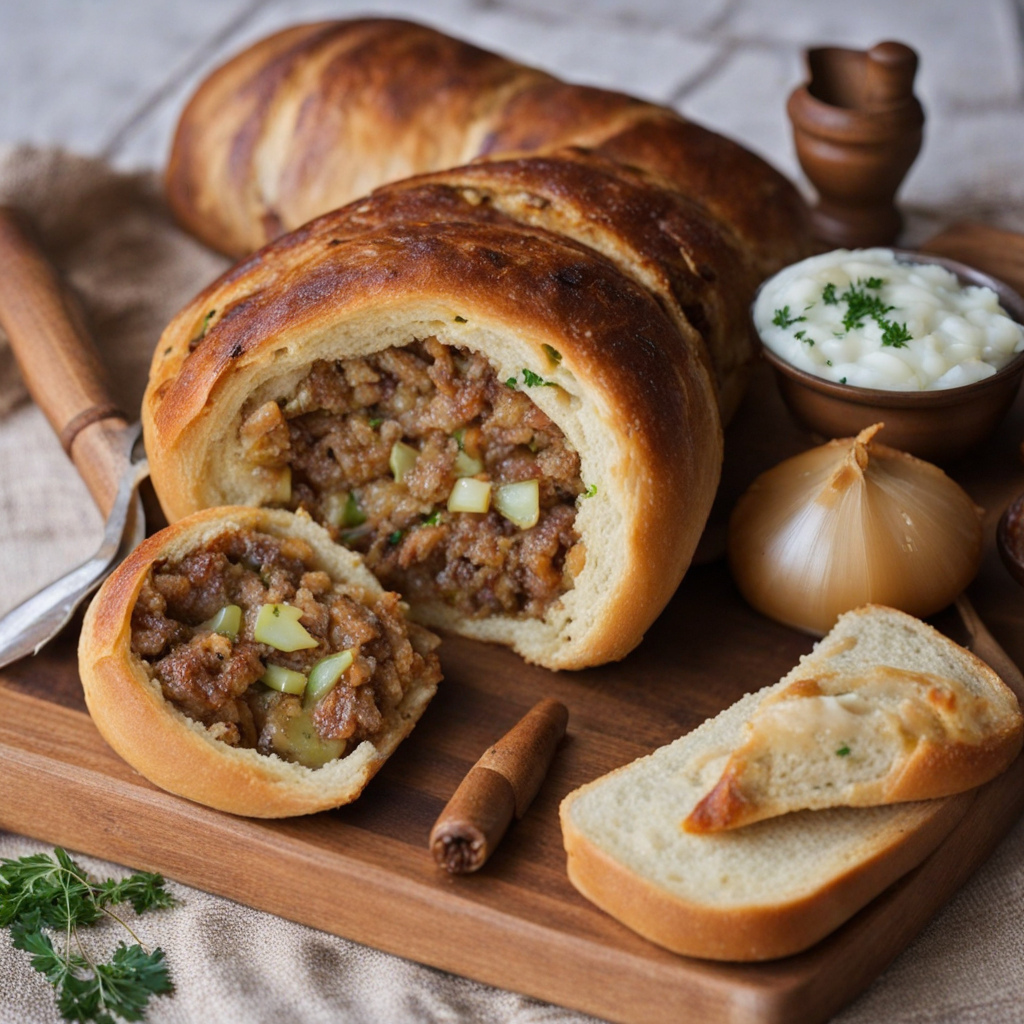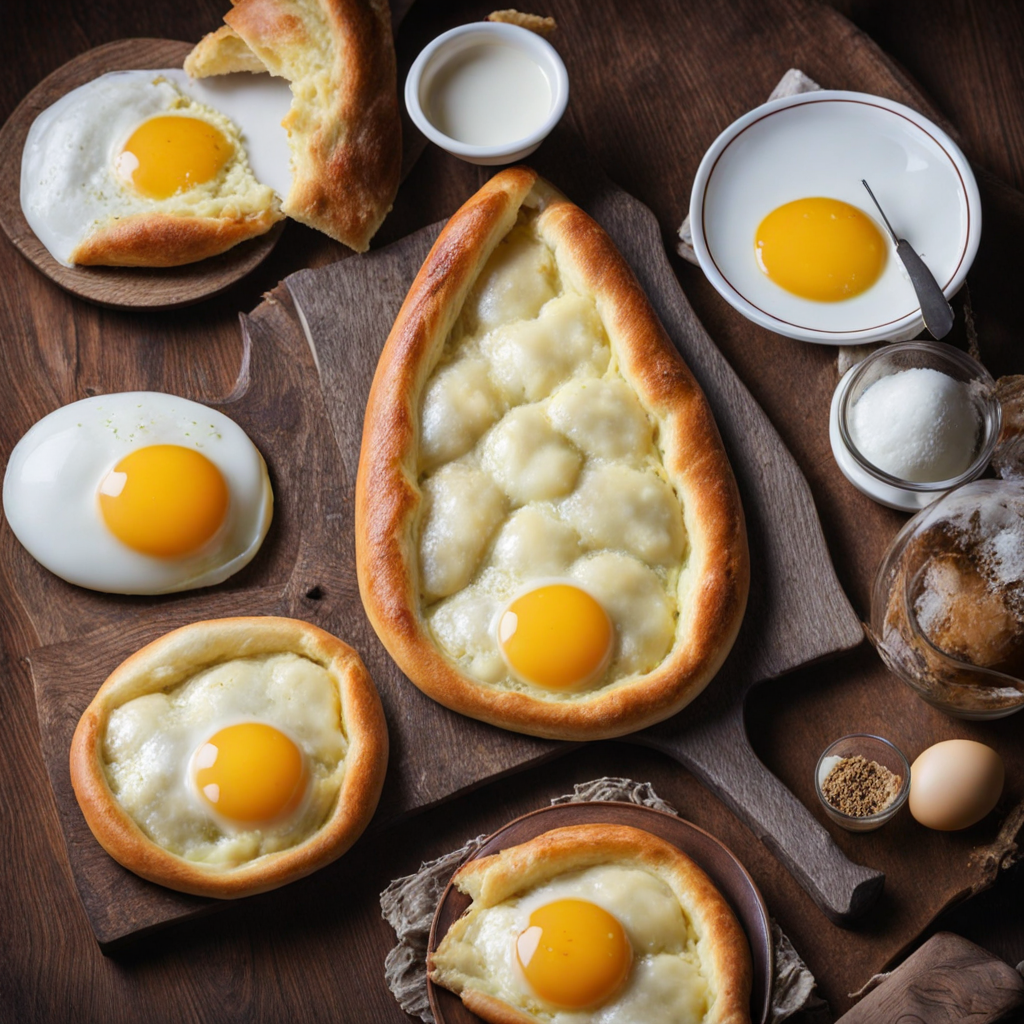Pkhali
Pkhali is a traditional Georgian dish that offers a vibrant taste of the region’s culinary heritage. Made primarily from finely chopped vegetables, such as spinach, beetroot, and eggplant, Pkhali is often seasoned with ground walnuts, garlic, and a medley of spices, creating a harmonious balance of flavors. The dish is typically formed into small, colorful mounds and garnished with pomegranate seeds or fresh herbs, making it not only delicious but visually appealing. Each bite brings a delightful crunch and a burst of earthy, nutty flavors that represent the essence of Georgian cuisine.
How It Became This Dish
The History of Phkhali: A Georgian Culinary Treasure Origin and Definition Phkhali (ფხალი) is a traditional Georgian dish that exemplifies the country's rich culinary heritage. Originating from the regions of Georgia, particularly in the mountainous areas, Phkhali can be described as a vibrant vegetable pâté, primarily made from finely chopped greens, vegetables, and nuts, all seasoned with an array of spices. The most common base ingredients include spinach, beet greens, and cabbage, which are combined with ground walnuts, garlic, and various herbs, creating a distinctive blend of flavors and textures that embody the essence of Georgian cuisine. The origins of Phkhali can be traced back to ancient times, with references found in historical texts and oral traditions. The name itself is derived from the Georgian word "ფხალი," which means "to mix," symbolizing the process of blending different ingredients into a harmonious dish. Given Georgia's geographic location at the crossroads of Europe and Asia, Phkhali has absorbed influences from various cultures throughout its history, resulting in a dish that reflects both local practices and broader culinary trends. Cultural Significance Phkhali holds a special place in Georgian culture and cuisine, often regarded as a symbol of hospitality and generosity. It is commonly served as part of a traditional feast known as a "supra," where guests are treated to an array of dishes that showcase the region's agricultural bounty. The dish is not only appreciated for its flavor but also for its nutritional value, making it a staple in the diets of many Georgians, particularly in rural areas. The preparation of Phkhali is often a communal activity, bringing families and communities together. This aspect of social bonding is intrinsic to Georgian culture, where food plays a central role in gatherings and celebrations. The sharing of Phkhali during festive occasions highlights the importance of togetherness and the appreciation of locally sourced ingredients. Additionally, Phkhali is a versatile dish that can be adapted to various dietary preferences, making it suitable for both vegetarians and meat-eaters alike. Development Over Time Throughout the centuries, the recipe for Phkhali has evolved, influenced by changes in agricultural practices, trade routes, and culinary innovations. In ancient times, the use of wild greens and herbs was common, as these ingredients were readily available in the forests and fields of Georgia. As agriculture developed, domesticated varieties of greens became more prevalent, leading to a broader range of options for creating this beloved dish. During the medieval period, the introduction of walnuts and spices, such as coriander and fenugreek, further enriched the flavor profile of Phkhali. The use of walnuts, in particular, is a defining characteristic of Georgian cuisine, symbolizing prosperity and abundance. The trade routes that passed through Georgia facilitated the exchange of spices and culinary techniques, allowing Phkhali to incorporate diverse influences while retaining its unique identity. In the 19th century, as Georgian cuisine began to gain recognition beyond its borders, Phkhali was introduced to a wider audience. It became a staple in Georgian restaurants and was often featured in cookbooks, showcasing its versatility and appeal. During this period, the dish began to take on regional variations, with different areas of Georgia developing their own interpretations based on local ingredients and traditions. For instance, in some regions, Phkhali is made with beets or carrots, while others may incorporate beans or lentils, reflecting the agricultural diversity of the land. The Soviet era brought significant changes to Georgian cuisine, as centralized policies influenced food production and distribution. Traditional recipes, including Phkhali, were adapted to accommodate the availability of ingredients and the preferences of a broader population. Despite these challenges, the dish remained a beloved part of the Georgian culinary landscape, often prepared during family gatherings and festive occasions. With the fall of the Soviet Union in the early 1990s, Georgia experienced a cultural renaissance, and traditional foods like Phkhali became emblematic of national identity. The revival of interest in indigenous culinary practices led to a renewed appreciation for Phkhali and its significance in Georgian culture. Chefs and home cooks alike began experimenting with modern techniques while honoring the dish's traditional roots, leading to a resurgence of Phkhali in both homes and restaurants. Modern Interpretations In contemporary Georgia, Phkhali has transcended its humble origins to become a celebrated dish both within the country and abroad. It is often presented as an appetizer or part of a meze platter, showcasing the vibrant colors and flavors that characterize Georgian cuisine. The dish has gained popularity in international culinary circles, with chefs around the world incorporating Phkhali into their menus as a representation of the diverse and rich culinary traditions of Eastern Europe. Innovative chefs have begun to reimagine Phkhali, experimenting with unconventional ingredients while preserving the essence of the dish. For example, variations may include the addition of roasted peppers, different types of nuts, or even unique spices to create new flavor combinations. These modern interpretations reflect the dynamic nature of food culture, where tradition and innovation coexist, allowing Phkhali to evolve while remaining rooted in its historical significance. Conclusion Phkhali is more than just a dish; it is a symbol of Georgian identity and a celebration of the country's agricultural heritage. Its rich history, cultural significance, and adaptability over time make it a fascinating subject for food historians and culinary enthusiasts alike. As Georgian cuisine continues to gain recognition on the global stage, Phkhali stands as a testament to the enduring legacy of a culture that values hospitality, community, and the joyous sharing of food. Whether enjoyed at a family gathering or in a fine dining establishment, Phkhali embodies the spirit of Georgia—vibrant, diverse, and full of life.
You may like
Discover local flavors from Georgia


